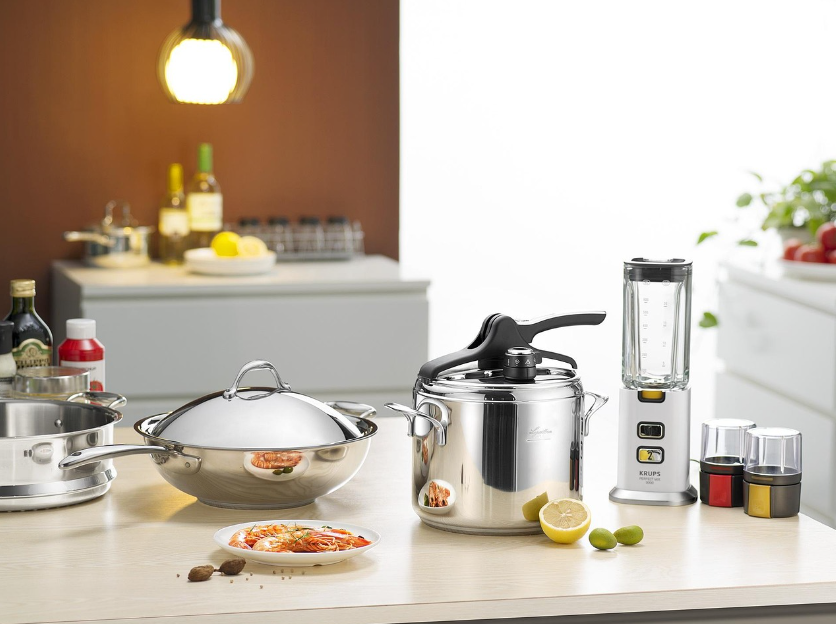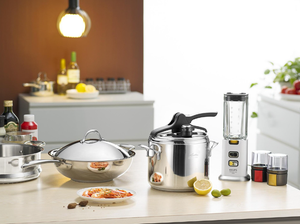
Detailed Explanation of Kitchenware Inspection Standards and Procedures - Inspection and Audit Services for Factories
Kitchenware, as food-contact products, directly affects the health of consumers due to their quality and safety. During the inspection, factory verification, and product inspection and certification processes of kitchenware, a strict quality control system must be established. This article will systematically elaborate on the inspection standards, testing methods, and quality certification requirements of kitchenware, providing professional guidance for relevant practitioners.
I. Basic Inspection and Certification Standards for Kitchenware
(1) Key Control Indicators Certification
Raw Material Certification Standards
Material consistency: Completely in accordance with the requirements of the purchase order.
Qualification certificate: Provide the certificate of conformity for raw materials
Imported materials: Original origin certificates and commercial inspection certificates must be provided.
Chemical composition: The main controlling elements such as C, Ni, Cr, Mo, V, etc. meet the standards.
Dimension accuracy certification
Thickness control: The thickness error of the product base and wall is ≤ ±0.1mm
Overall size: Error in other dimensions ≤ 5mm
Process requirements: Riveting and welding must be firm and without any looseness.
(2) General Quality Indicator Certification
Material Composition Certification
Element control: Other elements shall not exceed the range value by more than 10%.
Food-grade certification: Compliant with hygiene standards for food-contact materials
Surface quality certification
Completeness: No burrs, frayed edges, scratches, or other defects.
Process quality: The riveted area is full and free from cracks.
Welding quality: The weld seam is smooth and free of defects.
Packaging label certification
Packaging specification: Follow the approved method for packaging.
Clear identification: The company logo is prominent and easy to recognize.
Complete information: Standardized product information labeling
II. Special Inspection and Certification for Stainless Steel Kitchenware
(1) Product Classification Certification System
Functional Classification Certification
Spoon products: colander, soup spoon, rice spoon, etc.
Spatula products: Flat spatula, frying pan spatula, pancake spatula, etc.
Holding products: clamps, serrated clamps, etc.
Net sieve products: oil separators, rice baskets, etc.
Structural Certification Standards
Component division: The handle, the main body, and the neck are clearly distinguished.
Cleaning performance: The structural design facilitates thorough cleaning.
Symmetry requirement: The design is mainly of straight symmetrical type.
(2) Appearance Quality Certification
Consistency Certification
Batch uniformity: The form and size of products in the same batch are consistent.
Trademark specification: Position consistent, handwriting clear
Smooth surface: No burrs at the edges
Process Quality Certification
Neck quality: No welding spatter, no incomplete welding, no pores
Surface defects: Diameter less than 0.5mm, density meets requirements
Scratch control: The length and quantity are within the specified range.
III. Inspection and Certification Methods for Kitchenware Performance
(1) Structural Strength Certification
Permanent Deformation Test
Test method: Apply the specified pressure for 10 seconds
Measurement tool: Use a dial indicator to measure the deformation amount.
Certification standard: Deformation is within the allowable range.
Connection strength certification
Tensile test: Apply corresponding tension based on the width of the main body.
Torque test: Apply torque to the surface of the handle.
Time requirement: 10-second testing duration
(2) Durability Certification
Drop Test Certification
Test height: Drop from a height of 1 meter
Test orientation: 5 times in the vertical direction and 5 times in the horizontal direction.
Result assessment: Meets the requirements for structural integrity.
Certification of Neck Fatigue Resistance Strength
Test frequency: 17 times per minute
Movement travel: 30mm at a constant speed
Number of cycles: 150 repetitions of tests
(3) Material Performance Certification
Corrosion Resistance Certification
Test environment: Simulates actual usage conditions
Evaluation criteria: No corrosion phenomenon
Certification requirements: Comply with food-grade material standards
Plastic component certification
Thermal deformation test: 30 minutes in 80℃ water
High-temperature softening test: 110℃ for 6 minutes
Environmental stress test: Temperature cycling test
IV. Safety and Hygiene Certification System
(1) Food Safety Certification
Material Hygiene Certification
Food grade standard: Compliant with national food safety requirements
Non-toxic and harmless: Does not release any harmful substances
Health certificate: Provide relevant test reports
Cleaning performance certification
Structural design: Facilitates thorough cleaning and disinfection
Surface treatment: No hidden areas for dirt accumulation
Anti-pollution: Prevent food from being contaminated again
(2) Utilization of Safety Certification
Structural Safety Certification
Edge treatment: No sharp corners
Secure connection: No risk of loosening or falling off.
Heat protection: Anti-scald design
Chemical Safety Certification
Heavy metal release: Within the limit standard
Chemical stability: Resistant to acid and alkali corrosion
Temperature safety: Does not release harmful substances at high temperatures
V. Inspection and Certification Process Management
(1) Inspection Environment Certification
Inspection Condition Standards
Lighting requirements: Normal light or standard light source
Inspection distance: Suitable for visual inspection
Equipment provided: Special testing instruments and equipment
Personnel qualification certification
Professional skills: Having received professional training
Testing experience: Possessing relevant product testing experience
Qualification Certification: Work with Certificates
(2) Sampling Inspection Certification
Sampling Plan Certification
Sampling standard: Follow the national standards.
Sample size: Representative
Sampling method: Random sampling principle
Inspection record certification
Data record: Complete and accurate test data
Problem Description: Detailed explanation of the problem
Evidence preservation: photographic and video evidence materials
(3) Quality Certification
Certification of Qualified Products
Comprehensive pass: All inspection items meet the standards.
Documents are complete: complete quality certification documents
Packaging specification: Complies with packaging requirements
Non-conformance handling
Serious defect: Immediately reject and handle.
General defect: Re-inspection after timely rectification
Dispute resolution: Both parties confirm the resolution plan
VI. Continuous Improvement of Certification System
(1) Supplier Management Certification
Qualification Review Certification
Production license: Valid production qualification
Quality system: A comprehensive quality management system
Equipment capabilities: Advanced production inspection equipment
Process Monitoring Certification
Production inspection: Regular on-site inspections of the production process
Quality tracking: Full-process quality monitoring
Problem improvement: Effective problem improvement mechanism
(2) Quality Traceability Certification
Traceability System Certification
Batch management: A comprehensive batch traceability system
Material traceability: The source of raw materials can be traced.
Process Record: Complete Production Process Record
File Management Certification
Inspection Record: Complete inspection record file
Quality Report: Standard Quality Inspection Report
Improvement Record: Complete record of problem resolution
By establishing a complete inspection and certification system for kitchenware, and strictly implementing quality control throughout the entire process from raw materials to finished products, it is possible to effectively ensure the safety and quality of kitchenware products, provide consumers with safe and high-quality kitchenware products, and at the same time promote the standardized development of the kitchenware industry.
Share this product

Detailed Explanation of Kitchenware Inspection Standards and Procedure
Kitchenware, as products that come into contact with food, its quality and safety directly affect the health of consumers.
